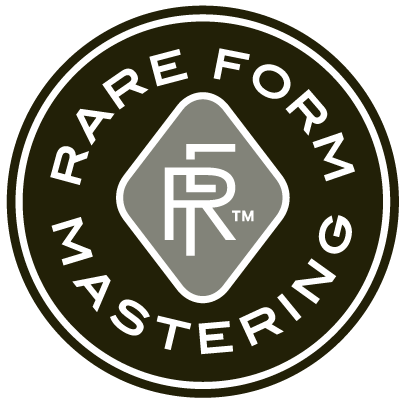Recommendations for Mixing for Vinyl
De-ess your vocals! I can’t stress this enough. Vocal sibilance is the number one problem I encounter on incoming masters. What sounds fine on a CD may simply be too much HF for a record. The more exposed the vocal the more likely it will be to distort. Listen to LPs from the ’70s and ’80s. Sibilance and HF content were well controlled (not to mention there was NO clipping) because engineers of that era knew the limitations of vinyl. Solving sibilance and HF issues during the mix is much more effective and less damaging than dealing with it in mastering and cutting.
Please do not center the low frequency content. This is an internet myth that just won’t die. While it’s true that certain circumstances will require the low end to be narrowed, only the cutting engineer is in a position to know when and by how much – if any at all. Doing it in the mix or in mastering can unnecessarily degrade the sound of your record. I’ve been at this for a while and I’m very well versed in the needs of vinyl and even I don’t know if it will be necessary until I’m setting up the cut. Trust me on this one. Leave the LF issues to me. I’ll keep every ounce of low end that I can to make your record sound as good as it can.
Levels for vinyl: Probably lower than you think. The first thing I have to do on 95% of the masters I cut is turn them down 10dB. Remember that a record cutting lathe (in my case it’s an industry standard Neumann VMS 70 record lathe build in 1974) was build to work from tape at levels that were significantly lower than what is common today. Just about any modern digital master is way too hot to feed the cutting electronics. And a brick wall limited waveform is not a good shape for a groove. The best thing you can do to make a great sounding record is to turn the master down. Skip the limiter. It works against us. Print the vinyl cutting master files with headroom. Your vinyl will sound a lot more like a record that way.
Upsampling: Don’t. There is nothing to be gained if the source audio was not recored, mixed and mastered at >44k1 sampling rate. As a guy who gets upsampled audio for vinyl on a regular basis, I can tell you there is nothing up there you want. Noise, distortion artifacts, etc. I filter that stuff out as soon as I can. Yes, interim processing can benefit from oversampling, but the benefit comes from filtering that stuff back out of the signal at the end of the processing chain. And beyond that, nothing up there belongs in the cutting electronics or at the business end of the playback stylus. Resist the urge. More is not better here. In the same way hard digital limiting is a bad idea for vinyl, any audio signal >20kHz works against us and only needs to be filtered back out.
If RFM is cutting lacquers but not mastering the digital files, please assemble your master into one continuous sound file for each side – exactly the way you want it to sound on the record. Label the files something like Band Name.Album Title.Vinyl Master Side A/B. Also, please fill out and return my Vinyl Track Sheet detailing the song sequence, the length of each song and the total length of each side.
Sequencing and sound quality: It’s a fact of physics that the outer bands of the record sound the best. Traditionally, the first band or two on each side is reserved for the most important, loudest or most dynamic tracks on the album while the inner bands are best for softer songs, ballads, that sort of thing. That’s because distortion increases and high frequency response decreases as the groove approaches the center of the disk.
Keep the side lengths relatively even from side to side and within the limitations of the medium. The amount of music you can put on one side of a record is a delicate balance between bass content, the length of the side and the level of the cut. One way to visualize it is with my Length / Level / Bass Triangle. As you can see below, more of one means less of the others.
For a pop / rock type sound, anything up to about 18-20 minutes on a standard 12” 33 1/3 LP side will sound great, 22 minutes is pushing it and 24 is really the max you want to go. I can cut longer sides at a lower level and with less bass. Quiet songs or songs with very little bass will push that time out a bit. Excessive level or bass content will reduce the time. You get the idea. Here are my recommendations:
12” 33 1/3 RPM:
DJ / Single levels up to about 6 minutes
Hot levels up to about 12 minutes
Standard levels up to about 18 minutes
Lower levels up to about 22 minutes
Even lower levels up to about 24 minutes
Spoken word or quiet classical up to about 28 minutes
12” 45 RPM:
Hot levels up to about 9 minutes
Standard levels up to about 15 minutes
10” 33 1/3 RPM:
Hot levels up to about 9 minutes
Standard levels up to about 15 minutes
10” 45 RPM:
Hot levels up to about 7 minutes
Standard levels up to about 12 minutes
7” 45 RPM:
Hot levels up to about 4 minutes
Standard levels up to about 5 minutes
Somewhat lower levels up to about 6 minutes
7” 33 1/3 RPM:
Standard levels up to about 6 minutes
Low levels up to about 7 minutes




